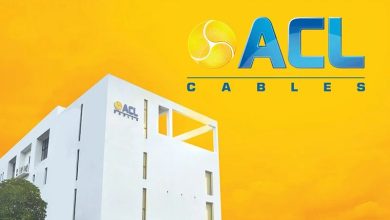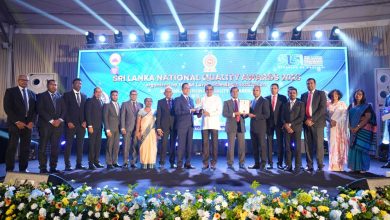SAMPATH BANK PLC
Regaining momentum amidst continuing headwinds
While the Pandemic is undoubtedly one of the most formidable challenges Sri Lanka has encountered in recent years, it is believed that the collective response of the local Banking sector has helped the country as a whole, to handle the unexpected economic downturn in 2020.
Sampath Bank too faced many challenges in adjusting to the pandemic. Transitioning into a fully digital environment and an entirely new operating model under pandemic related restrictions was no easy feat. However, thanks to the solid progress made on the digital front in the recent past, the Bank was able to make the transition in a matter of days to ensure uninterrupted operations. Equally importantly, Sampath Bank played a vital role in stabilizing the economy through the disbursement of the relief package for COVID affected businesses and individuals. The Bank extended the phase I of the Covid – 19 debt moratorium to over 50% of its loan book last year while 29% of the loan book remained under phase II of the debt moratorium in 1Q 2021 as well. Sampath Bank also actively participated in disbursing the Saubhagya Renaissance scheme to eligible customers. Where necessary, the Bank also took its own initiatives to assist customers to tide over the difficult times.
As the pandemic situation continues to evolve and bring fresh challenges, Sampath Bank capitalized on the lessons learnt in the past to strengthen resilience and accelerate its transformation to the post-pandemic world. At the same time, the Bank reiterates its commitment in rolling out the new relief measures proposed for 2021.
Meanwhile, the Bank subdivided its ordinary shares in the proportion 01:03. As a result, the number of shares increased from 381,457,985 to 1,144,373,955.
Financial results of Sampath Bank for the first quarter of 2021:
The Bank recorded a Profit before tax (PBT) of Rs 6.1 Bn in 1Q 2021 compared to Rs 3 Bn in 1Q 2020, denoting a growth of 101%, while Profit after tax (PAT) increased by 83% to Rs 4.6 Bn from Rs 2.5 Bn recorded in the first quarter of 2020. Resilient performance of all business lines along with the improved credit quality helped bolster Sampath Bank’s performance in the first quarter of 2021.
The Sampath Group also registered significant growth in 1Q 2021, as evinced by the improvement in both PAT and PBT in the first quarter of the year. The Group reported a Rs 5.1 Bn PAT and a Rs 6.7 Bn PBT for the period under review, denoting a growth of 90.7% and 103.5%, respectively compared to the figures reported for the same period in the previous year.
Fund Based Income (FBI)
Net interest income (NII) declined by 7.7% during the period under review to Rs 9.2 Bn from Rs 9.9 Bn recorded in the corresponding period in 2020. The drop in the NII is attributed to the prevailing low interest rate environment. However, the Bank continues to proactively monitor all variables that are likely to impact the NII to ensure a sustainable return.
Overall, interest income for the period under review decreased by Rs 3.8 Bn to Rs 20.7 Bn compared to Rs 24.5 Bn recorded for the corresponding period in 2020, a decline of 15.4%. During the first quarter of 2021, the Bank registered Rs 11.5 Bn in interest expenses which was a 20.7% decline against the corresponding period in 2020.
Non-Fund Based Income (NFBI)
The Bank’s NFBI comprises credit, trade as well as card and electronic channel related fees and commissions. Driven by higher business volumes in these areas, NFBI for the quarter under review grew to Rs 2.6 Bn, a 15.8% increase compared to Rs 2.2 Bn recorded in 1Q 2020.
Net other operating income grew by 16.9% during the period under review, led by an increase in realized exchange income which is attributed to a 7.3% depreciation of the Sri Lankan Rupee against the US Dollar. Benefitting from the Rupee depreciation, net other operating income for the first three months of 2021 increased to Rs 2.7 Bn, compared to Rs 2.3 Bn reported during the corresponding period in 2020. On the other hand, due to the aforementioned currency depreciation, the Bank incurred a net trading loss of Rs 335 Mn due to mark-to-market losses on forward exchange contracts. Accordingly, the Bank’s net exchange income from foreign exchange transactions amounted to Rs 2.3 Bn for the period under review.
Operating Expenses
The Bank’s total operating expenses, which amounted to Rs 5.1 Bn in 1Q 2020, increased by 6.9% to Rs 5.5 Bn in 1Q 2021. Higher personnel expenses mainly contributed towards this increase. However, thanks to stringent cost containment strategies, other expenses decreased by 6.4% in 1Q 2021 compared to the corresponding period in 2020.
Meanwhile, owing to the overall increase in operating expenses, Sampath Bank’s cost-to-income ratio (excluding taxes on financial services) increased to 38.9% at the end of 31st March 2021, considerably higher than the 37.1% reported for the corresponding period in 2020.
Impairment charges
Impairment charges for the period under review dropped by 75.7% compared to 1Q 2020 and stood at Rs 1.2 Bn at the end of the quarter ended 31st March 2021. This is primarily due to higher impairment provisions made in the first quarter of last year. The first quarter of 2020 saw the spread of COVID -19 in Sri Lanka, prompting the government to declare a nationwide lockdown from March 2020 for a period of 2 months. This unique situation created uncertainties which the country has never seen before. After a careful assessment of the situation and considering the possible impact on the Sri Lankan economy and its direct impact on the Bank’s credit quality, Sampath Bank prudently decided to increase substantially its impairment provision for 1Q 2020.
However, commencing from the latter part of the year 2020, the Bank saw an improvement in credit quality among customers who did not obtain the moratorium, which is reflected in the decrease of stage 3 loans by 4.4%. This factor also contributed to the decrease in the impairment provision compared to 1Q 2020.
In 2020, the Bank downgraded customers operating in elevated risk industries on a prudential basis from Stage 1 to Stage 2 and recognised a substantial provision to account for the potential risk. Further provisions were made by increasing the probability weightage on the worst-case macro-economic scenario to capture the expected credit losses. Moreover, given the sluggish movement in the overall advances portfolio and the debt moratorium extended in 2020 and also considering the potential impact that could arise once the debt moratorium phase II lapses, it was decided to recognise a material impairment provision as an allowance for overlay, in 2020. It should be noted that the Bank has used the same impairment models and assumptions used in the previous year to determine impairment provisions for 1Q 2021 and continues to carry forward the additional impairment provisions made last year.
The CBSL permitted the Bank to apply a minimum loss given default (LGD) of 10% for the investment in foreign currency denominated government securities. However, the Bank applied a prudential approach by using the LGD of 20%, which it had applied in 2020.
Taxation
Income tax expenses of the Bank stood at Rs 1.5 Bn at the end of 1Q 2021, which is an increase of 181.9% compared to the corresponding period in 2020. This is mainly due to the increase in tax base compared to the previous year same period.
As per the announcement dated 12th February 2020, income tax rate applicable for the Banking sector was reduced to 24% with effect from 1st January 2020. As the said amendment was not enacted, both income tax and deferred tax provisions were calculated at the rate of 28% for the year ended 31st December 2020. However, based on the guidelines issued by the Financial Reporting Standards Implementation and Interpretation Committee (FRSIIC) of CASL dated 23rd April 2021, the revised rate of 24% can be used to compute tax provisions. Accordingly, Sampath Bank applied the revised rate of 24% and the other proposals announced by the government for the computation of income tax liabilities & deferred tax assets/liabilities in March 2021.
The rate applied in the corresponding period in 2020 was 28%.
These amendments collectively reduced the tax expense of the Bank by Rs 405 Mn for 1Q 2021. This includes a reversal of Rs 1,093 Mn against current tax expense and an additional charge of Rs 688 Mn against deferred tax. In addition, the deferred tax charge to other comprehensive income decreased by Rs 70 Mn.
Business growth
From the Rs 1.11 Tn reported as at 31st December 2020, Sampath Bank’s total asset base grew by 3.7% (annualized 15.1%) in 1Q 2021 to reach Rs 1.15 Tn as at 31st March 2021. Gross loans & advances grew by 2.7% (annualized 10.9%) to Rs 779 Bn as at 31st March 2021. Meanwhile, the total deposit base increased by Rs 28 Bn for the same period, to Rs 914 Bn as at the reporting date, a growth of 3.2% (annualized 13%). The Bank’s CASA ratio at the end of 1Q 2021 stood at 41.6%
Capital adequacy and performance ratios
Sampath Bank’s Common Equity Tier (CET) I Capital, Tier I Capital and Total Capital Adequacy ratios as at 31st March 2021 stood at 12.94%, 12.94% and 15.76% respectively, all well above the corresponding minimum regulatory requirement of 6.5%, 8% and 12%, applicable as at the reporting date.
The Statutory Liquid Asset Ratio (SLAR) for the Domestic Banking Unit and the Off-Shore Banking Unit was at 35.82% and 33.12% respectively as at the reporting date. Return on Average Assets (ROA) (before tax) stood at 2.19% and Return on Average Equity (ROE) (after tax) stood at 16.97% at the end of 31st March 2021.
Debenture Issue
During the month of April 2021, the Bank successfully raised Rs 6 Bn Tier 2 capital via issuance of Basel III compliant, listed, rated, unsecured, subordinated, redeemable 7-year debentures with a non-viability conversion. It is worth mentioning that the aforementioned debenture issue was oversubscribed on day 1. This successful debenture issue reiterates the confidence the investors have placed on Sampath Bank.
Dividend payout ratio
Sampath Bank recorded the highest cash dividend payout ratio for 2020 compared to its peers despite the challenging economic conditions that prevailed






